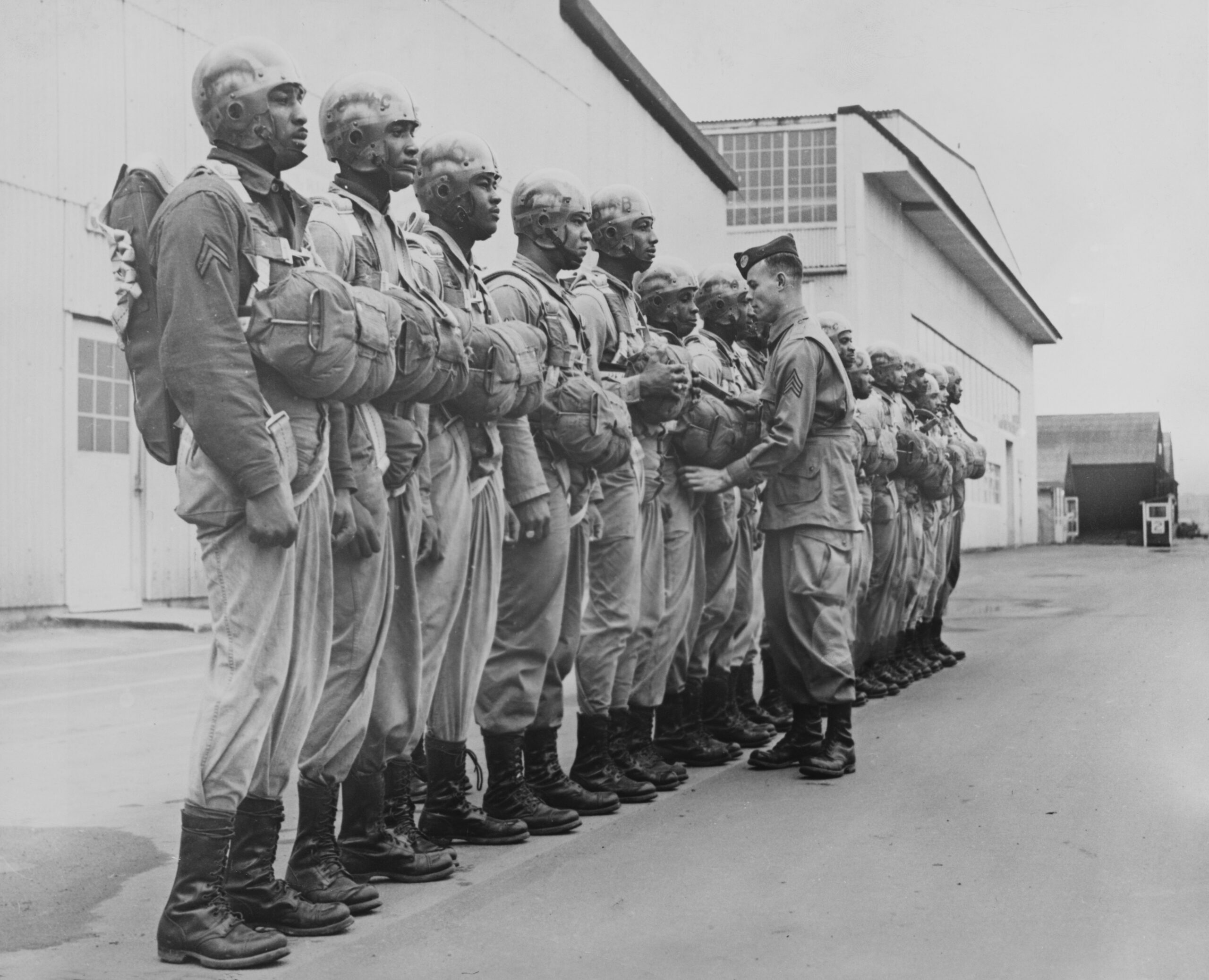Photo by Keystone/Hulton Archive/Getty Images
Infantrymen jumping from airplanes behind enemy lines was a brand-new proposition for the American armed forces at the onset of World War II. Beginning with an initial test platoon of 40 white men in August 1940, the U.S. Army had three divisions of paratroops with two more on the way by mid-1943.
What it did not have, however, were Black paratroopers. It took some ingenuity and individual initiative before the army accepted Black men as elite paratroopers.
Before he earned the telltale jump wings of a U.S. Army paratrooper, First Sergeant Walter Morris, pictured here in 1944 receiving his parachute school graduation certificate, was the top enlisted man for the all-Black Service Company of the Parachute School at Fort Benning, Georgia.
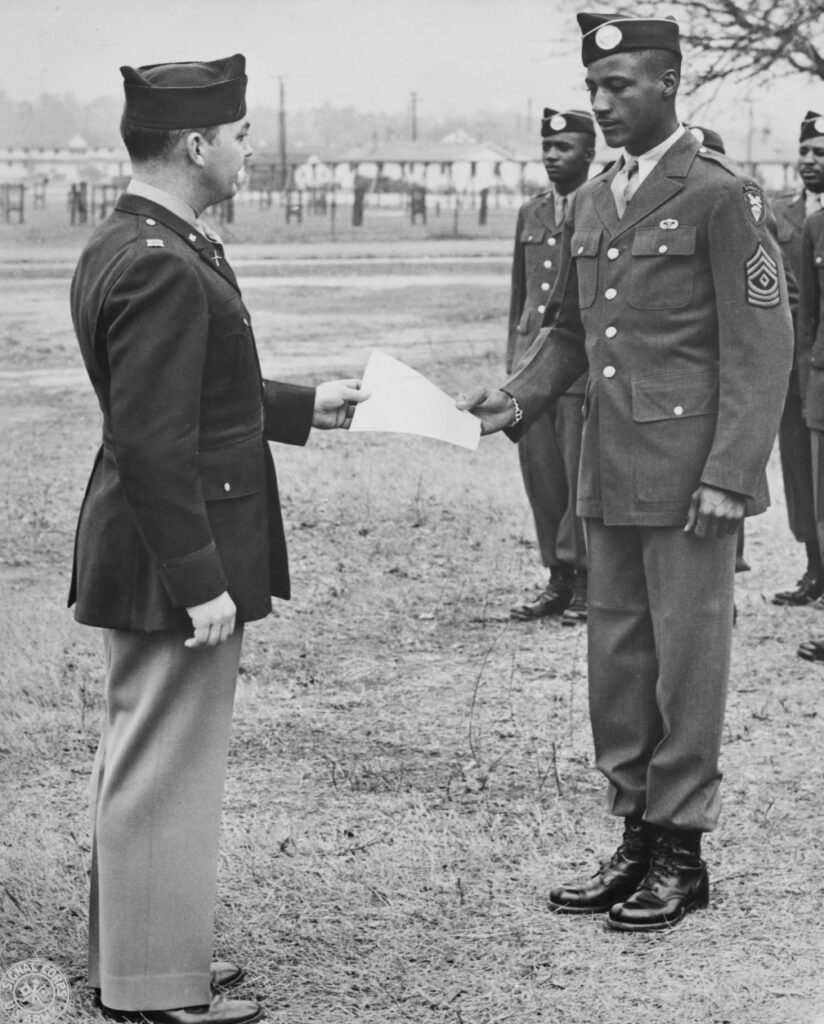
Photo by Bettmann Collection/Getty Images
As Company First Sergeant, it was his responsibility to ensure his men were motivated and properly trained. This was especially important as his company commander had washed out of parachute training and was barely present. He “spent most of his time at the Officers Club [and] could care less what happened to the men,” according to Morris.
Morris observed that watching the white paratrooper trainees day in and day out demoralized his men. He believed that if he could at least have his men mimic the same “elite” parachute training (minus jumping from towers and airplanes) it might just cure his company’s morale problem.
His idea worked so well that he was ordered to report directly to the commandant of the Parachute School—the “tough as nails” Brigadier General Ridgely Gaither.
Gaither had observed Black soldiers training in off-limit areas in the afternoons and wanted to know what they were doing. Morris explained that he was hoping to motivate his men. The general then informed him that the army had decided to form a unit of Black paratroopers and that he wanted Morris to lead it.
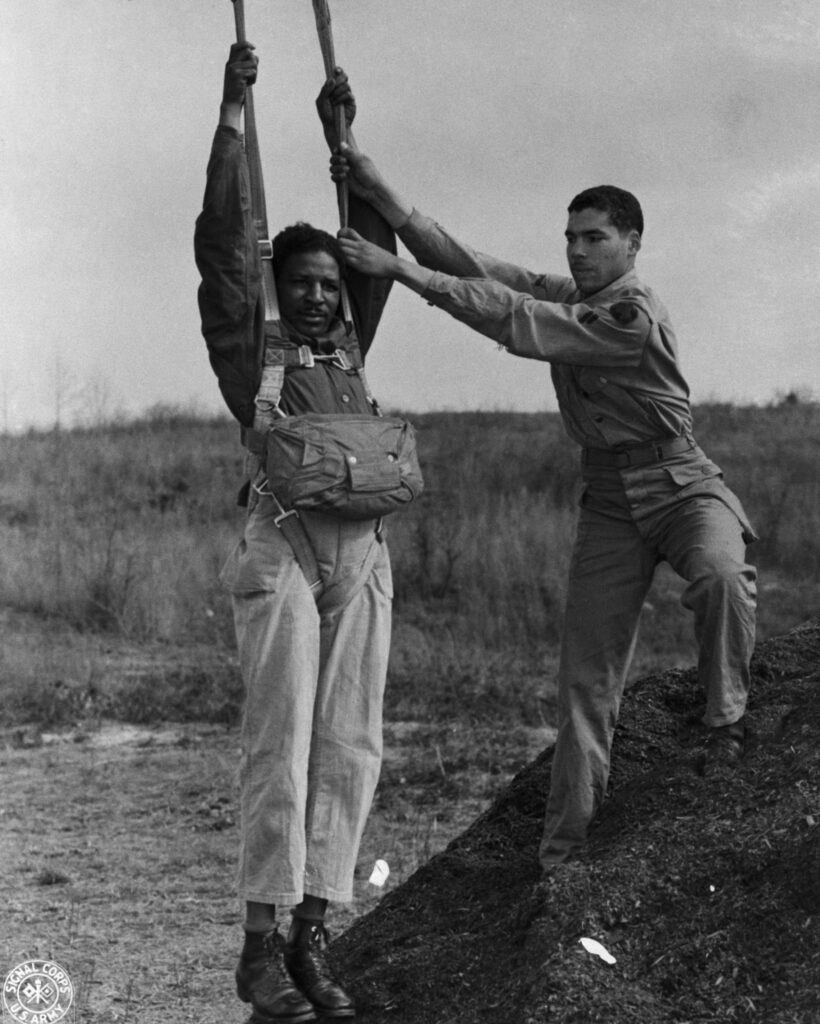
Photo by Bettmann Collection/Getty Images
Morris and 16 men formed the “colored test platoon” and proceeded to prove their ability and courage in standard parachute training, as depicted in the photos above and below. The test platoon earned their jump wings in March 1944, paving the way for an expansion of African American paratroopers. After earning their wings, they helped train six Black officers in parachuting techniques to lead their unit.
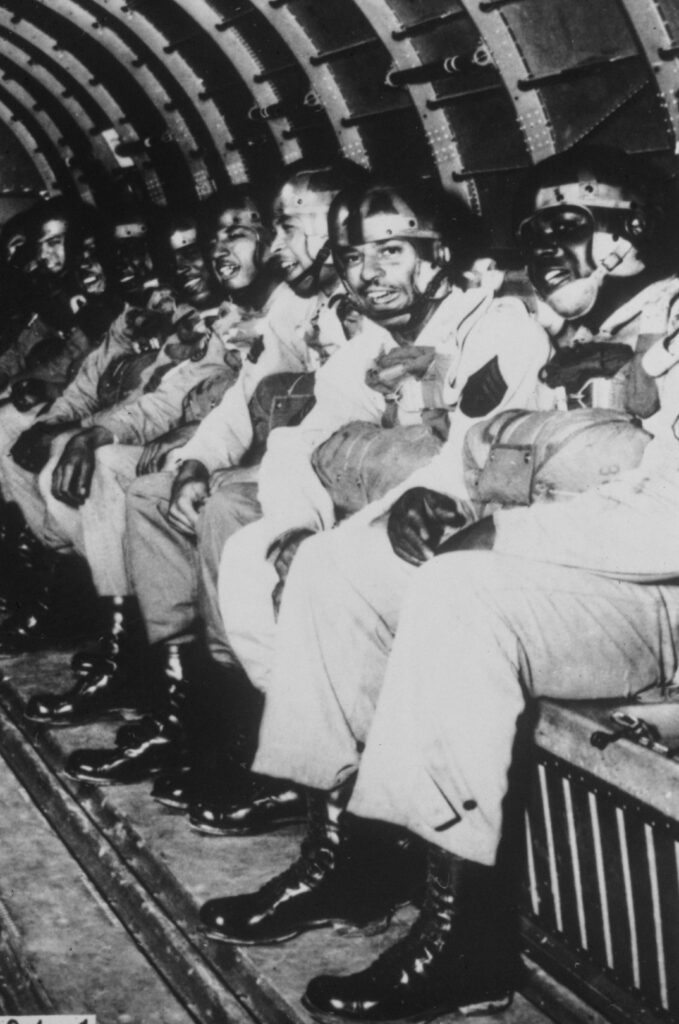
Photo by Archive Photos/Getty Images
The first African American paratroopers were eager to prove that “all blood runs red” and that they were “being underestimated.” “We didn’t win any wars, but we did contribute,” Morris stated in 2000. “What we proved was that the color of a man had nothing to do with his ability.”
These 17 men paved the way for other Black paratroopers. Black men from all over the army clamored to join the elite all-Black parachute unit at Fort Benning. The test platoon expanded to the 555th Parachute Infantry Company, and finally to a full-fledged battalion in November 1944.
Their unique nickname, “Triple Nickles,” came from their numerical designation (555th) and the three buffalo nickels that formed the unit insignia of the all-Black 92nd Infantry Division, known as the “Buffalo Soldiers.” Seventeen of the original volunteers came from the ranks of the 92nd.
Of course, impressing the top brass and “proving themselves” was never quite enough. The army continued to hamper their efforts. The unit never made it overseas to fight in combat, ostensibly due to personnel shortages. But as Morris recalled, although “no Field Commander in Europe or the Far East wanted ‘colored troops’ mixing with their racist white troops, the Army was stuck with us.”
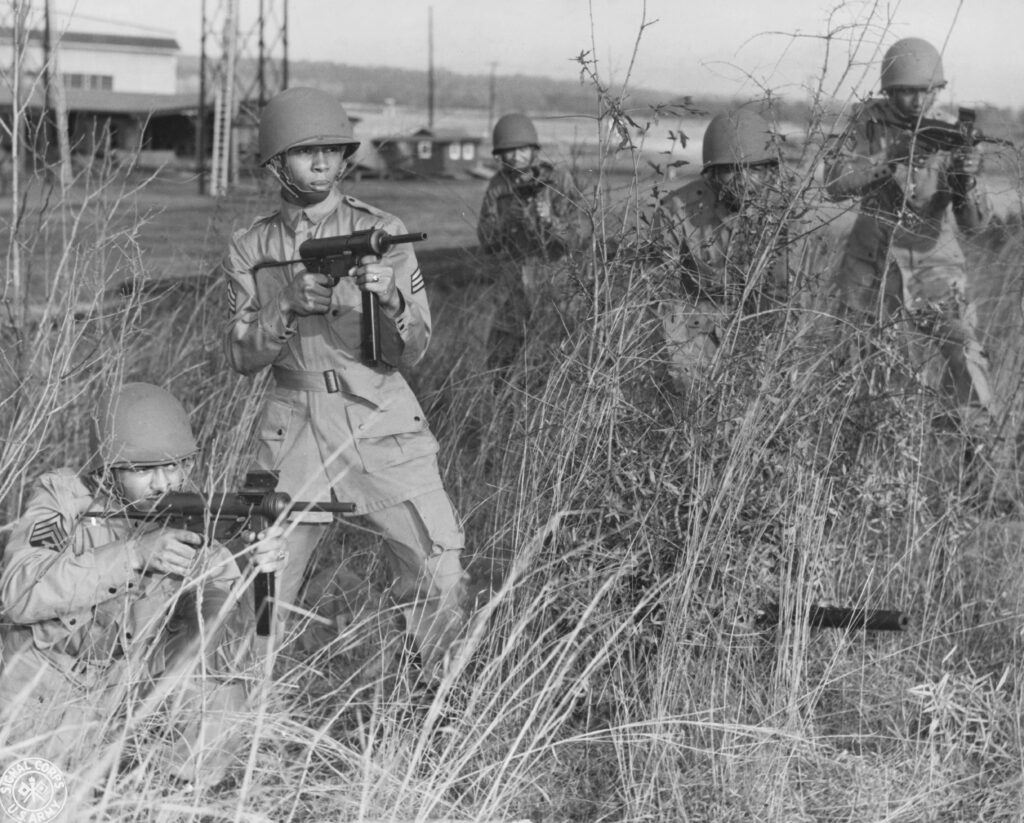
Photo by Bettmann Collection/Getty Images
Rather than fight overseas, the men of the 555th, pictured here training at Fort Benning in 1944, were sent to fight forest fires in the Pacific Northwest for Operation Firefly.
The Japanese had launched a few balloons with incendiary bombs that landed in the Northwest, so Morris and his battalion went to Pendleton, Oregon where they made hundreds of jumps into Oregon’s mountainous forests. For a battalion of paratroopers imbued with the same spirit as white paratroopers, this assignment was disappointing.
The battalion marched with the famous 82nd Airborne Division during the January 1946 victory parade in New York City. The “Triple Nickles” remained attached to the 82nd until it was integrated into the division in December 1947. This made the 82nd the Army’s first integrated division a full six months before President Harry S. Truman signed Executive Order 9981.
Walter Morris’ leadership, ingenuity, and courage training his men as paratroops in 1943 and 1944 played a modest but notable role in inspiring broader military desegregation.

Learn More:
Tanya Lee Stone, Courage Has No Color, The True Story of the Triple Nickles: America’s First Black Paratroopers, Illustrated edition (New York: Scholastic, Inc., 2013).
Bradley Biggs, The Triple Nickles: America’s First All-Black Paratroop Unit (Hamden, CT: Archon Books, 1986).
Edward L. Posey, The US Army’s First, Last, and Only All-Black Rangers: The 2d Ranger Infantry Company (Airborne) in the Korean War, 1950-1951 (New York: Savas Beatie, 2011).
Jacqueline E Whitt and Elizabeth A Perazzo, “The Military as a Social Experiment: Challenging a Trope,” Parameters: The US Army War College Quarterly vol. 48, no. 2 (Summer 2018): 5–12.


